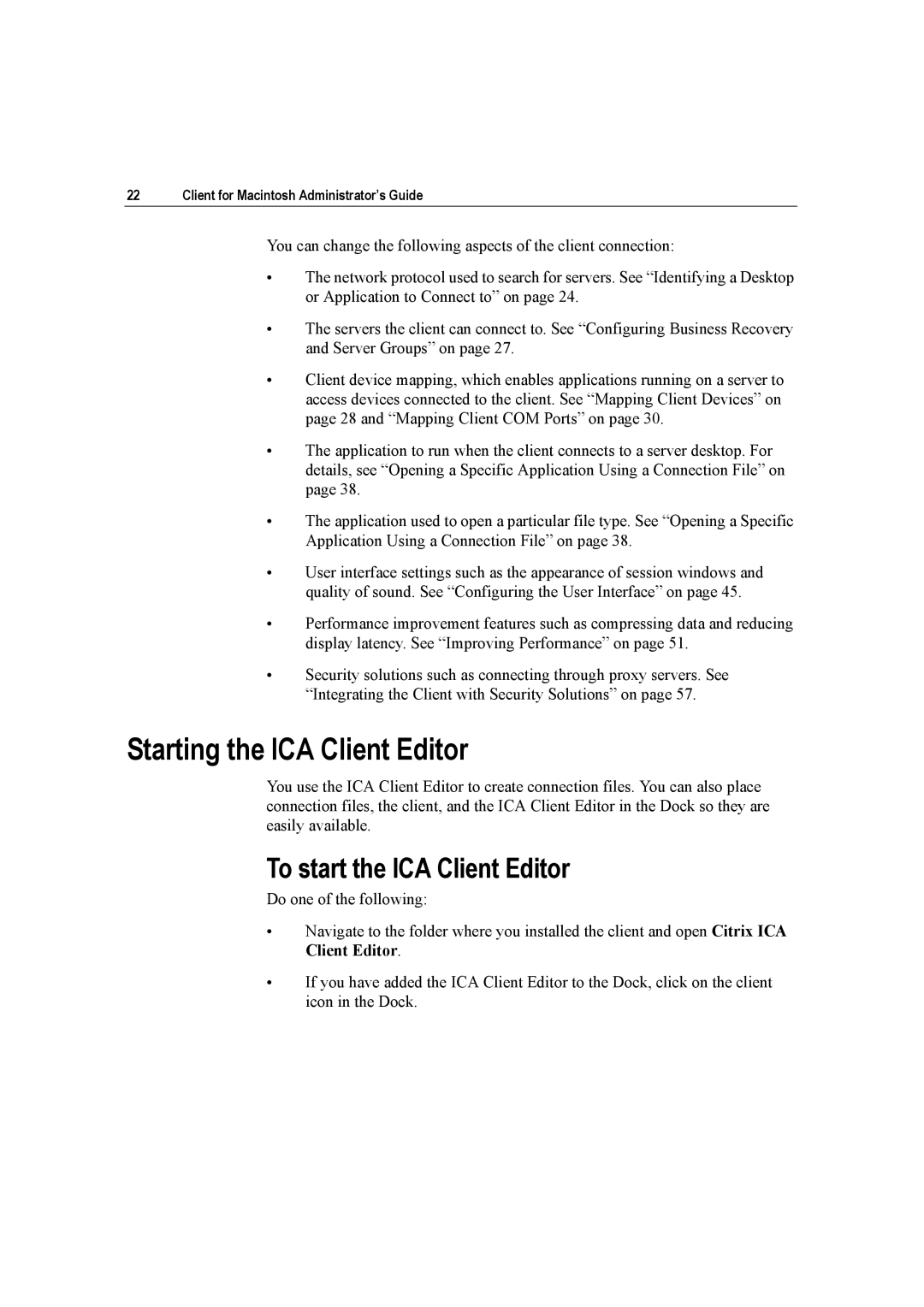22 | Client for Macintosh Administrator’s Guide |
You can change the following aspects of the client connection:
•The network protocol used to search for servers. See “Identifying a Desktop or Application to Connect to” on page 24.
•The servers the client can connect to. See “Configuring Business Recovery and Server Groups” on page 27.
•Client device mapping, which enables applications running on a server to access devices connected to the client. See “Mapping Client Devices” on page 28 and “Mapping Client COM Ports” on page 30.
•The application to run when the client connects to a server desktop. For details, see “Opening a Specific Application Using a Connection File” on page 38.
•The application used to open a particular file type. See “Opening a Specific Application Using a Connection File” on page 38.
•User interface settings such as the appearance of session windows and quality of sound. See “Configuring the User Interface” on page 45.
•Performance improvement features such as compressing data and reducing display latency. See “Improving Performance” on page 51.
•Security solutions such as connecting through proxy servers. See “Integrating the Client with Security Solutions” on page 57.
Starting the ICA Client Editor
You use the ICA Client Editor to create connection files. You can also place connection files, the client, and the ICA Client Editor in the Dock so they are easily available.
To start the ICA Client Editor
Do one of the following:
•Navigate to the folder where you installed the client and open Citrix ICA Client Editor.
•If you have added the ICA Client Editor to the Dock, click on the client icon in the Dock.
